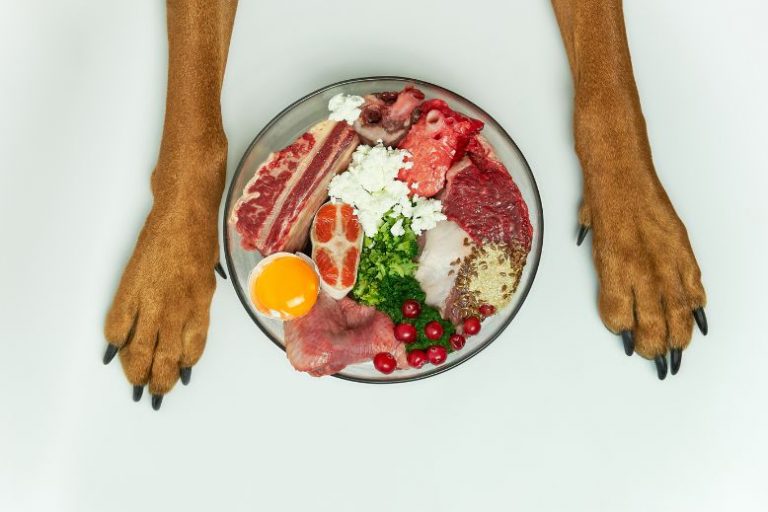As April brings in the vibrant energy of spring, it also delivers a fresh crop of seasonal vegetables that can benefit both you and your dog. While dogs are primarily carnivores, many vegetables are safe, healthy, and nutritionally enriching when added in moderation to their meals. Whether you’re making homemade dog food or simply looking to boost your pup’s bowl with some plant-based extras, April’s harvest offers plenty of options.
Here are the best seasonal vegetables to add to your dog’s bowl this April, along with tips on preparation, portion size, and health benefits—so your furry friend can spring into the season feeling their best.
Table of Contents
Best Seasonal Vegetables To Add To Your Dog’s Bowl This April
1. Carrots
Crunchy, sweet, and packed with beta-carotene, carrots are a spring staple that dogs tend to love. They’re rich in vitamin A, which supports vision, immune health, and skin.
You can serve carrots raw (great for a chewable snack), steamed, or shredded over kibble. For senior dogs or those with dental sensitivities, lightly cooking them makes them easier to digest.
Benefits for dogs:
- Supports eye health
- Low in calories and high in fiber
- Helps clean teeth when served raw
2. Spinach (In Moderation)
Spinach is in season in early spring and offers a nutrient-dense option for your dog. It contains iron, antioxidants, and vitamins A, B, C, and K.
That said, spinach should be served in moderation. It contains oxalates, which, in large quantities, can interfere with calcium absorption. A small, steamed portion mixed into your dog’s meal occasionally is safe for most dogs.
Best served: Lightly steamed and chopped to aid digestion
3. Green Beans
Fresh green beans are an excellent low-calorie snack or meal supplement. They’re high in fiber and contain essential vitamins like C and K, as well as manganese and folate.
Green beans can be chopped and served steamed or raw (if your dog doesn’t have difficulty chewing). Avoid canned versions with added salt or seasoning.
Why dogs love them:
- Crunchy and filling
- Great for weight management
- Easy to prepare and mix into meals
4. Peas
Snap peas and garden peas are in season during April and offer a tasty, nutrient-packed addition to your dog’s diet. Peas are high in protein for a vegetable and include vitamins A, B, and K, as well as iron and zinc.
Most dogs tolerate peas well, especially when served steamed or pureed. However, avoid feeding them pea pods that are tough to chew or digest.
Preparation tips: Steam or mash before mixing into food
5. Broccoli (In Small Portions)
While broccoli is packed with fiber and vitamins C and K, it should be given in moderation due to its potential to cause gas or stomach upset in some dogs.
April is peak season for broccoli, and a small, steamed floret or two can be a nutritious boost to your dog’s dinner. Avoid seasoning or oil, and always cut into bite-sized pieces.
Pro tip: Introduce broccoli gradually to monitor how your dog responds
6. Zucchini
Zucchini is a mild-flavored veggie that’s easy on the stomach and loaded with potassium, fiber, and antioxidants. It’s especially good for dogs needing a low-fat, low-calorie food addition.
Slice it thinly and offer it raw, grilled (plain), or lightly steamed. Dogs typically enjoy its crunchy texture and subtle taste.
Why it works well:
- Hydrating
- Low allergen potential
- Gentle on the gut
Safe Feeding Guidelines for Vegetables
While vegetables are a fantastic supplement, they should never replace a balanced, protein-based diet. Keep these tips in mind when adding spring veggies to your dog’s bowl:
- Introduce one vegetable at a time to watch for allergies or digestive upset.
- Always wash produce thoroughly to remove pesticides or contaminants.
- Avoid seasoning, butter, onions, garlic, or sauces—these can be toxic to dogs.
- Vegetables should make up no more than 10% of your dog’s daily food intake, unless otherwise recommended by a veterinarian.
In Conclusion

Spring is all about renewal, and what better way to embrace the season than by freshening up your dog’s meals with April’s best vegetables? From crunchy carrots to nutritious peas and fiber-rich green beans, seasonal produce can bring variety, nutrition, and a touch of springtime flavor to your dog’s daily routine.
By introducing these veggies in moderation and keeping preparation simple, you’ll not only support your dog’s health but also make mealtime a little more exciting. As always, when in doubt, consult your vet about dietary changes—especially for dogs with sensitivities or medical conditions.







